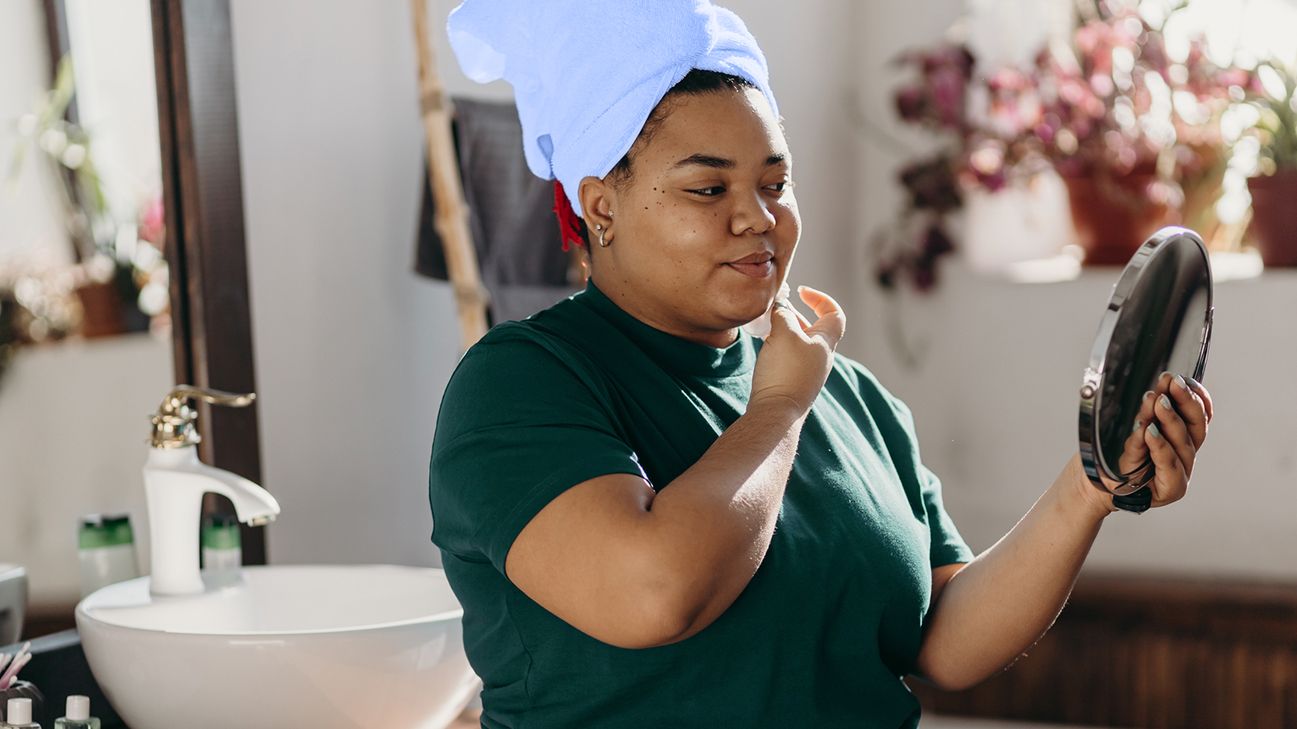Does the skin care aisle seem like information overload? Trying to sort through the marketing speak to find out the pros and cons of astringent vs. toner? We’re here to help.
While astringent and toner are both water-based skin care products meant to help give your face a deeper cleanse, they actually do have some key differences in how they’re made and how you use them. So which one should you add to your nightly skin care routine? Here’s how to decide.
Astringent vs. toner
Astringent and toner are both water-based skin care products. You’ll use each after you wash your face with a facial cleanser. They help remove any makeup or residue that gets left over.
The key difference between the two is that astringent is typically made with alcohol and designed to remove excess oil from the skin. Toner, on the other hand, doesn’t tend to include alcohol, it’s more hydrating, and even better for sensitive skin.

Here’s the DL on each of these products.
What’s astringent?
You should generally use astringent as a second step in your skin care routine, right after you wash your face. The water-based formula can help to remove any makeup, dirt, or grime that your cleanser just didn’t get to.
Astringents are almost always made with alcohol specifically to remove the excess oil from your skin. They’re generally stronger and more potent than toners and can be very drying if you already have a dry skin type.
How about toner?
You’ll also use toner as the second step in your skin care routine after you wash your face. It’s another product that will remove any makeup or debris left behind on your skin.
Unlike astringents, though, toner isn’t usually made with alcohol. These water-based formulas are typically a bit more hydrating and soothing so they’re ideal for sensitive, dry skin.
To skin care newbies, astringent and toner might seem like a waste of time, but they both offer plenty of benefits to keep your skin looking its best.
- Both thoroughly cleanse your skin. You can use astringent or toner after you initially wash your face to remove any leftover makeup or debris. They can leave your skin feeling super clean.
- Each can help calm inflammation. Both astringent and toner can be useful in easing inflammation. Common ingredients like witch hazel is anti-inflammatory and may soothe skin.
- Astringent is best to remove excess oil. Astringent in particular is formulated with alcohol to remove excess oil from the skin. It creates a drying effect that helps creates a matte look for people with oily skin.
- Astringent could help to make pores less visible. Astringent can help temporarily stop the secretion of sebum and can remove the dirt and oil deep in your skin. This makes skin look and feel tighter and can help reduce the appearance of pores.
- Astringent may help fight acne. Astringent’s ideal for acne-prone skin. Most astringents contain isopropyl (aka alcohol), which dries out skin and could help zap zits.
- Toner hydrates and moisturizes. Toner isn’t as strong as astringent and it’s typically made with more hydrating, botanical-based ingredients. Look for soothing ingredients like rose water, vitamin E, chamomile, and aloe vera to keep skin feeling softer and hydrated after use.
Even though astringents and toners have different perks, they’re applied the same way. Here’s how it’s done.
- Wash and dry your face thoroughly.
- Pour 1 to 2 small drops of product on a cotton pad or your hands.
- Use a dabbing motion to apply the product all over your face, concentrating on oilier or acne-prone spots if necessary.
- Follow up with your next skin care step, like serum or moisturizer.
You can typically use astringent and toner twice a day, morning and night. However, if you find that your astringent is too drying, try using it only once a day instead.
Before you rush to buy a brand new product, let’s take a look at the potential downsides to keep in mind.
Since astringents are usually made with alcohol, they can be very drying. If you’re using astringent to reduce the appearance of acne, you could make your acne worse if your skin’s already on the dry side.
Avoid using astringents or harsh toners if you’re experiencing:
You’re going to have to choose a favorite. It’s not a good idea to use both astringent and toner in your routine. Here’s how to decide which one is the best fit.
When to go with astringent
- You have oily skin.
- You’re prone to breakouts and acne. (In this case, look for astringents that also contain ingredients such as salicylic, glycolic, or lactic acid to help banish blemishes.)
- You want to tighten skin and give it more of a matte appearance.
When it’s time for toner
- You have sensitive or dry skin. (Look for toners without any alcohol added, they can be less drying.)
- You want to keep skin extra moisturized and hydrated. (Check for ingredients like hyaluronic acid, aloe, glycerin, and glycolic acids.)
- You have combination or normal skin.
Astringents and toners are skin care products you can use to thoroughly cleanse your skin. The main difference between the two is that astringent generally contains alcohol and it’s specifically meant to get rid of excess oil.
Toners don’t typically contain alcohol and they can be more moisturizing and hydrating. That makes them ideal for sensitive skin. But neither of these products are necessary for everyone. If you’re looking for personalized advice on the best skin care routine for your skin, talk with your dermatologist.

